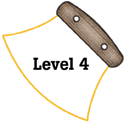
Alaska Science
Key Element C2
 |
Alaska Science |
|
Performance Standard Level 4, Ages 15–18
|
|
|
|
Sample Assessment Ideas
|
Standards Cross-References
|
||
|
National Science Education Standards Recognize and analyze alternative explanations and models. This aspect of the standard emphasizes the critical abilities of analyzing an argument by reviewing current scientific understanding, weighing the evidence, and examining the logic so as to decide which explanations and models are best. In other words, although there may be several plausible explanations, they do not all have equal weight. Students should be able to use scientific criteria to find the preferred explanations. (Page 175) Results of scientific inquiry—new knowledge and methods- emerge from different types of investigations and public communication among scientists. In communicating and defending the results of scientific inquiry, arguments must be logical and demonstrate connections between natural phenomena, investigations, and the historical body of scientific knowledge. In addition, the methods and procedures that scientists used to obtain evidence must be clearly reported to enhance opportunities for further investigation. (Page 176) |
Benchmarks Scientists in any one research group tend to see things alike, so even groups of scientists may have trouble being entirely objective about their methods and findings. For that reason, scientific teams are expected to seek out the possible sources of bias in design of their investigations and in their data analysis. Checking each other’s results and explanations helps but that is no guarantee against bias. (Page 13) Wonder how likely it is that some event of interest might have occurred just by chance. (Page 300) Insist that the critical assumptions behind any line of reasoning be made explicit so that the validity of the position being taken—whether one’s own or that of others’—can be judged. (Page 300) Suggest alternative ways of explaining data and criticize arguments in which data, explanations, or conclusions are represented as the only ones worth consideration, with no mention of other possibilities. Similarly, suggest alternative trade-offs in decisions and designs, and criticize those in which major trade-offs are not acknowledged. (Page 300) for further investigation. (Page 176) |
|
Table of Contents | Return to Alaska Native Knowledge Network